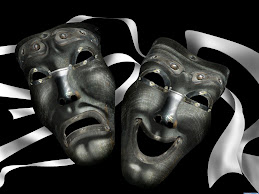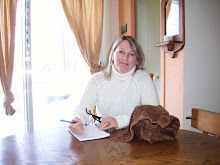Monday, March 2, 2009
SaBooge: Thought Provoking Physical Theatre
SaBooge's Co- Artistic Director and founding member Andrew Shaver, along with fellow performing artist Attila Clemann, are dedicated in sharing their expertise through creative training workshops.
Creating Walls
Climbing a wall can be difficult. Climbing a wall that doesn't exist can be more difficult. Drawing on their training in mime both Attila and Andrew demonstrated to us how the climbing of a wall was not about the actor's struggle in climbing the mimed wall at all, but rather the focus being the mimed wall itself. As this workshop was made up of Concordia theatre students this proved to be somewhat of a challenge. A tip of the hat to both leaders who demonstrated the patience of Job with this particular exercise.
Miming
The introduction of a mimed improvisation swimming pool sketch was another exciting, creative, and educational experience. As this exercise progressed I felt the sudden urge to speak. This urge for dialogue was so strong that it was unbearable. I ended up forcing an untimely and unneededconflict into the scene to help ease, what I felt was an uncomfortable silence. Ultimately, this did not work for the scene or the audience.
When Less Means More
Attila explained that in waiting for an opportunity to present itself, rather than forcing a contrived conflict, we open ourselves up to more opportunities. With this perspective the "less is more" approach gives a chance for a more natural conflict to arise. In delaying unnecessary dialogue and therefore not rushing the scene, we keep ourselves open to giving the audience the conflict they would like to see happen instead of our own.
Throughout the SaBooge week-end workshop, Attila and Andrew taught us the benefit of using Lecoq's building spectrum of reactions to different sound levels while performing a movement. As Attila points out, "It's quite a bit different from just being aware because it is transmitted through the performers relationship to their actions. This is critical to make it visible and not just an intellectual or psychological range or 'gamme'." In using these different levels during a performance, an actor can build up to a moment in a scene realistically.
The 6 Steps of Reactions to a Growing Sound
1. A sound is heard and there is no notice and no change in the movement. (No importance)
2.A sound is heard and it is noticed but there is no change in the movement. (Little importance)
3.A sound is heard and is noticed, the movement does not change but the person checks where it came from and whether it will happen again. (Some importance)
4.A sound is heard, noticed, and the rhythm of the movement changes. The person checks for the sound source and is reassured that all is okay and resumes the normal rhythm of the movement. (Important)
5. A sound is heard, noticed but is not what was expected; a dramatic shift. The movement stops entirely but might resume. This is a moment of suspension. (Very important)
6. A loud sound is heard and the movement has to be completely abandoned. (Absolute importance)
Collective Visual Narratives
Another class exercise was concentrated on a filmic image - based approach. In this creation each group presented a scene from a movie of their choice. My group's pick was the film Titanic . We presented several key scenes that would be easily recognisable and opened with Jack Dawson winning the tickets onto the ship. We then transitioned into a jump cut image forming the outline of the Titanic. Another filmic image we used was in the scene with Jack drowning.
Imaginative Physical Performances
Because we couldn't have Jack sink into the floor, it was suggested we create his drowning by having him slide down onto the floor and rotate his body while being pulled off the stage area . At the same time we also had members of our group drowning and rotating in unison. This helped to sharpen the close up effect we wanted. We also transitioned ourselves in and out of the various scenes by turning ourselves away from the audience or action and freezing.
Andrew Shaver and Attila Clemann are two experienced, dedicated, patient and committed professional theatre artists whose enthusiasm for teaching their physical theatre techniques, created an ideal atmosphere for an amazing collaborative learning experience.
Subscribe to:
Post Comments (Atom)


No comments:
Post a Comment